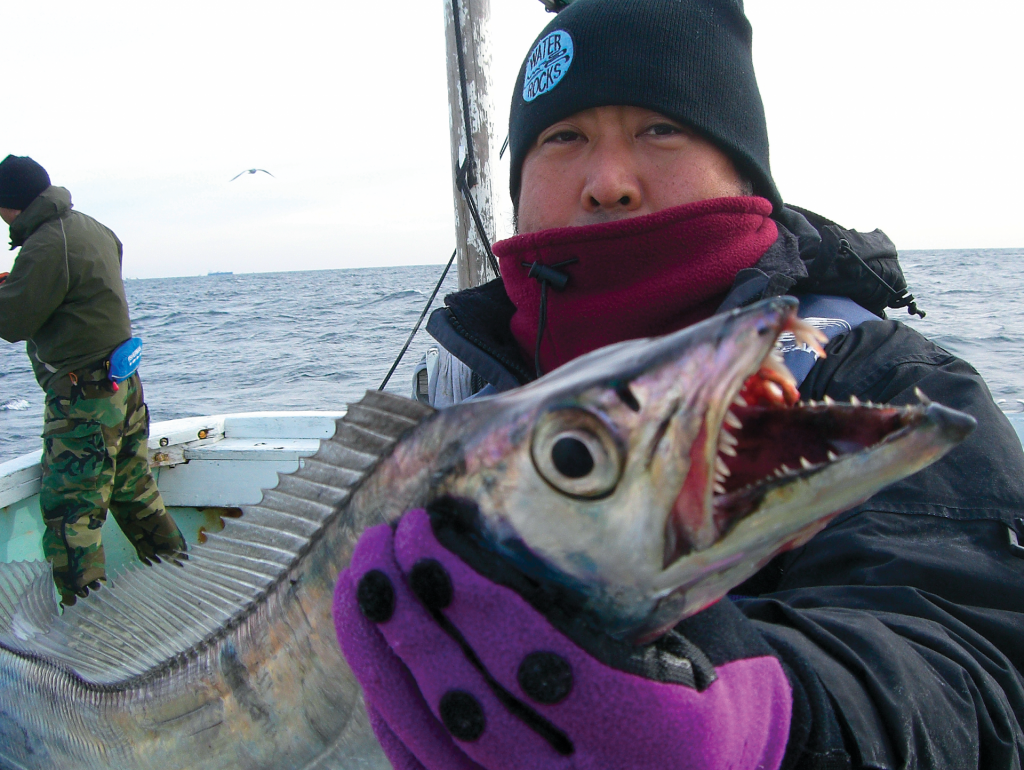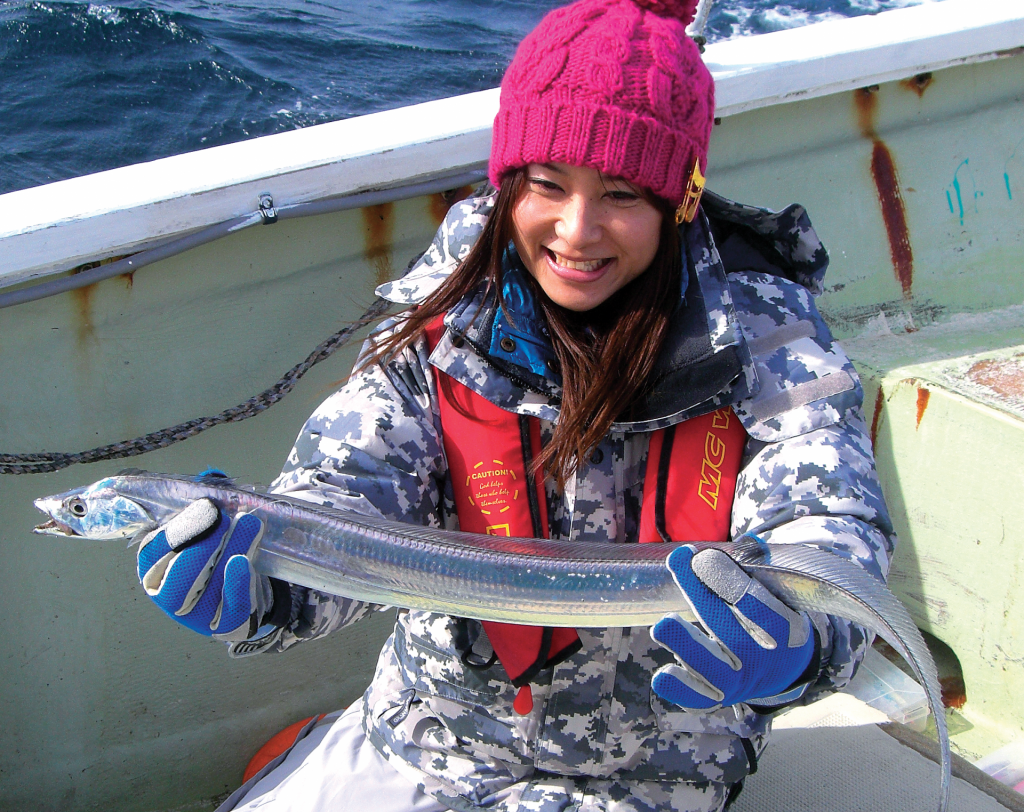
The past 24 hours have passed with no sleep for me, bouts of seasickness, fatigue and cold weather, and all the other makings of a sport fishing nightmare, but it’s been worth it. My cooler box is chocker-block full of some of Japan’s biggest and tastiest ribbon fish. I was actually worried I would have to takkyu-bin part of my catch home, because I had too many.
This is an annual ordeal for the members of my fishing club. We run ourselves into the ground making this trip, despite being able to catch ribbon fish most of the year in Tokyo or Suruga Bay.
There are two reasons we embark on the six-hour journey to Mie Prefecture. One, because the winter bite in Ise Bay is full from start to finish and, two, because the fish we pull up are all huge; hence the popular term “sea dragons.”

Ribbon fish, called tachiou (太刀魚) in Japanese, are what usually show up on breakfast teishoku plates from Kansai on westward instead, of the salmon we eat in the Kanto area.
Before coming to Japan, I had only heard of this fish being used as bait for king mackerel and wahoo in Florida but, as I found out, it’s one of the best eating fishes around.
The conventional way to catch these guys is to use cut strips of chub mackerel, but today we went after our quarry using light jigging tackle. “Jigging” is a popular system of lure fishing using parabolic action rods, thin braided line and heavy metal jigs.
Using this method makes fishing insanely fun, because the angler has complete control over the presentation of the jig and feels the full force of the fish striking.
When a ribbon fish strikes a lure, it feels as though a dumbbell has magically come into existence on the end of your line. These fish have long, thin, wimpy looking bodies, but they can pull like an Olympic tug-o-war team when hooked. Even experienced anglers can mistakenly think they’ve snagged their jigs on the bottom, when in actuality there’s a beast of a tachiuo thrashing around below.
I lost one or two of mine due to “bite offs;” a common occurrence when a ribbon fish strikes, misses the jig and ends up cutting the fluorocarbon leader with its razor-sharp teeth. Today’s catch has been so good, I don’t mind my ¥3,000 worth of jigs sitting on the ocean floor waiting to become artifacts to be discovered after the next ice age.
This trip has taken the life out of me, but I’ll go again in a heartbeat if my friends want to do another charter.
Essential Info
For those wanting to get in on the action in Ise Bay, our boat of choice is the Fire Dolphin (Web: www.fire-dolphin.com) run by Capt. Miyamoto. This outfit is popular, so book in advance. For more information on the basics of light jigging for ribbon fish in English, check out www.japanangler.com.





